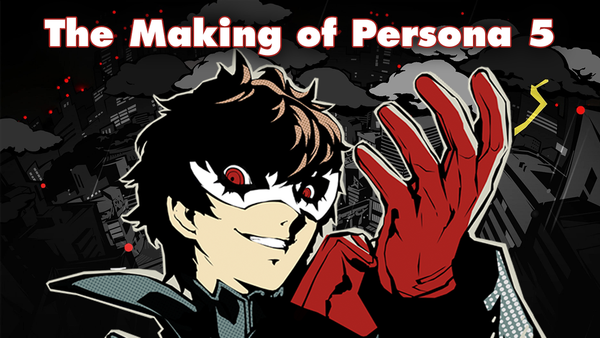Tales of Arise: How to Reinvigorate A Series (Review)

ds an adventure, an epic quest that a chosen group of individuals are fated to undertake. Over the years, JRPGs have become iconic due to their rich narratives and mystical worlds. JRPGs have embraced the ideas and identity of the heroes' journey and adapted it gracefully into the gaming format. The age-old genre has molded and shaped the industry and the sense of journey as an immersive experience that rivals its contemporaries.
Now we're in 2022, and I'm looking back on how much this space has evolved, and it is no surprise that the Tales of Arise is our nominated JRPG of 2021. By the time the credits roll with around 60 hours played, I understood why this game has become so adored among fans of the series and the genre, with its addictive combat, beautiful, diverse worlds, and empowering story that grips you throughout each of its story arcs.
Tales of Arise is a beautiful open-world adventure reminiscent of the JRPGs of old but reinvigorated for a modern audience that tells a compelling narrative and contains a world rich with lore. The game remains digestible and accessible for someone looking to get into the series or JRPGs. The game is bathed in vibrant anime ascetics. It's beautiful and full of fine details, making the world a real treat to explore. This flare and attention to detail seep into every aspect of this game. According to Yusuke Tomizawa, the producer for Tales of Arise, when they began developing this game, the goal was to evolve the Tales formula and re-evaluate the direction the series was heading. This response is likely due to the reception of Tales of Zesteria. The final product is a deep game that still embodies the identity of the series but follows a much darker story, a smaller cast of characters, and a considerable variation of gameplay mechanics.
Story and Characters
Narrative
The story follows a conflict between the two planets of Dahna and Rena. The technological Renen's waged war and won against the Dahan's and now have enslaved them to gather their energy. The game puts us in the shoes of Alphen, an enslaved Danhan who has no recollection of his past and cannot feel pain. Upon rescuing a Renen woman named Shinonne, the two set out on a journey to overthrow the Rennen rulers and liberate the world of Dahna. This may sound on its surface like a typical Shounen adventure, and at first, it is. But trust me when I say there's more to the narrative here than what is presented. Tales of Arise delivers well on its payoff on the major plot points it sets up and the world it creates. Although there are a few predictable moments, the overall story delivers an action-packed adventure that hits the right notes and answers the questions it poses. A significant contributor to how well the story beats land is how fleshed out the world is. Every city in Dahna is distinct and rife with its societies, politics, and struggles. Although this game may exhibit some predictable anime tropes throughout its story, the change in direction that the narrative takes this game at times will catch most people off guard, and most will be pleased by the time the credits roll.

The pacing in this game, for the most part, is pretty good. However, some moments feel stretched out and like they exist to help pad the game. On the contrary, towards the latter half, things can feel a little rushed due to the narrative's direction. These moments can make the pacing come off a little jarring and can leave the narrative flow feeling uneven at times. But these encounters are few and far between but are noticeable. The game is at its strongest when it feels segmented into an arc-like structure akin to a Shounen anime like One Piece. You will learn a great deal about the city and the struggles of its people, which all neatly ties back to the companions you meet and the reasons they fight. This type of world-building makes for an ever-evolving journey and helps set up the story and flesh out its characters early on in the game.
One significant change in this entry is the overall tone, which feels much darker than the light-hearted nature of previous entries. The game dives into some heavy themes and maintains this tone throughout the main story. Although Tales of Arise's over tone is darker, this isn't to say that there aren't light-hearted moments in this game, as there are over hours of mini conversations and cutscenes that enable the player to get attached to each character and their personality.
Skits
Among the many things that I've mentioned, there's one thing the Tales series does to enhance its character development and world-building: skits. These skits are little side conversations that take place amongst the party that are light-hearted discussions, providing insight into the characters, cities, or events that have taken place. These skits work so well because they build the relationships between our main cast and help build and flesh out the world. How these skits are presented is through a clean distinguishing format, a comic panel style that separates these scenes stylistically from regular cutscenes and provides additional exposition for those wanting more from the narrative experience. The party members accompanying you in the game are much smaller than that of other franchises or Tales games.

However, this change is welcomed, as it gives us more time to connect with our party members and get to know them. You will be introduced to these characters reasonably early in the game and provided ample time to know them through the main story and optional conversations. The party members are all well distinguished and likable. The problem lies more with the antagonists. Most feel one-dimensional and lacking in any natural substance due to the pacing issues mentioned previously. The villains in this game aren't given enough time to develop as characters properly. They're serviceable, but more could have been done with these characters, especially given the subject matter and themes this game tackles.
Although I had this shortcoming with the game, I wouldn't say that it was enough to hinder my experience and would still say to anyone looking for a JRPG or fantasy narrative with a strong sense of world-building to try this entry into the Tales series.
Gameplay
Combat
For this review, I will be only showing gameplay from the earlier sections of this game to avoid spoilers. The Tales series has always been a different beast regarding its combat loop. The Tales series isn't turned-based like many other franchises in the space. Instead, it is a more action RPG-oriented experience where you run into an enemy to begin an encounter. The combat in its most basic form gives the character three ground Artes and three Arial Artes. These Artes are your core abilities and will be the bread and butter of how you fight your enemies. Artes can be fully customized and tailored to meet the player's playstyle.
This flexibility allows for a deep pool of experimentation but, in turn, allows the player a deep arsenal of tools for player expression. The range of abilities on offer in this game keeps the combat fresh and exciting, creating a sense of growth and change in your playstyle over your experience.
Using Artes will cost Ability Gems or AG meaning that you can't spam these abilities, but it's better to weave them in between your basic attacks making for fluid combos. The more consistent you keep this combo going, the more likely you're to send your enemy into a "break" state where the enemy is staggered, and your attacks do more damage. The core benefit of breaking an enemy is that if they're still continuously attacked in this state, this will give the party a chance to execute a strike attack, which works as a finisher for most enemies. Many variants of these strike attacks are shared across the party of characters, which makes achieving them always feel fresh and exciting.
Another interesting combat element is the implementation of character abilities called Boost Attacks. How these attacks work is varied and tied to one particular party member. These abilities can work as enhanced attacks but also as crowd control to leverage a fight. An example of this is how one character can make a charged punch attack which will stagger and lower the guard of shielded enemies, making it harder for them to block your attacks and knock them down temporarily.

The combat loop in Tales of Arise always feels refreshing because you're always learning new abilities and gaining access to new mechanics and enemies. The Over Limit works similarly to a Limit Break providing an ultimate attack to one enemy, with each character getting a flashy cutscene. An interesting thing about the Over Limit is while you're in this state, all moves require no AG to use, meaning you can spam all your six abilities currently in rotation until the Over Limit bar expires.
Gameplay Systems
Tales of Arise contains a wealth of gameplay systems that jell with the moment action that the combat demands. One of these systems is the camps that you find littered out across each location, allowing team members to cook meals and provide buffs based on the resources you've discovered around the open world. These temporary buffs offer you and your party an edge in battle, but this isn't the only feature the campfire offers. The campfire allows Alphen the chance to interact with each party member and learn more about their personal story. This builds on a few narrative threads narratively. Gameplay-wise, this strengthens your relationship with the said character, allowing them to unlock new abilities in their ability tree.
The Skill Panel in Tales of Arise works much like the Crystarium System from Final Fantasy XIII. There's a large sphere with five neighboring sub-spheres, and these adjacent spheres are Artes to add to your active rotations or passive abilities that make keeping your party alive easier. However, if you invest your Skill Points into a group of five spheres, you will activate an additional ability from the parent sphere (represented in the middle). These are usually stat increases, but you are rewarded for investing in a specific avenue of abilities.

Much like every other JRPG, you will be looking for the best equipment and gear in Tales of Arise to equip to boost your player's stats. One visual addition is when purchasing a new weapon for a character, you can see the weapon physically change to what you have equipped. However, this doesn't apply to armor unlocks, which is a shame, as all visual outfit changes are through Owl collectibles or paid cosmetics. The Owl collectibles are a fun addition that will add extra mileage to your playtime if you're looking to complete the game in its entirety. However, it would still have been a nice added touch to see your armor equipment change, rather than just seeing numbers increase. However, this is a meaty package full of customization for the player to express themselves.
Exploration
The open-world environments of Tales of Arise are zone-based areas that work as a middle ground between exploring an enormous mass of land and walking corridors. Tales of Arise strikes the right balance of size and scope for its areas and environments. There is plentiful to do in each space from various side quests, resources to collect, and even docks to stop by and go fishing. The game offers tones of side content and unique enemy variation that feel fitting for the areas they appear in, making the world and its habitat believable and threatening. There are also unique high-level enemies that you can return to and fight in various locations throughout your journey, making returning to previous areas feel challenging. Most places in this game will have many paths that will often lead you to treasure and other exciting surprises. How these locations have been designed is intentional, and everything you find and encounter rewards you.
Visuals
The visual presentation in Tales of Arise is varied, with many different methods used to convey a scene. There are three main ways a scene will carry out in Tales of Arise. The first is an anime cutscene. These are scarce and usually used alongside a big story beat. The animations for these cutscenes are a visual spectacle. The second form that is most commonly used is the in-game cutscene. These play in-engine and are accompanied by voiced dialogue. These take place more frequently and are the primary driver for pushing the story forward. Lastly are the skits. As referenced earlier, these are mini conversations amongst the party and usually are used to flesh out the world or a particular character. These are optional discussions and have been a staple in the franchise for a while now. However, this panel-by-panel comic book visual is a new addition added in Tales of Arise.
The world is finally detailed with a wide variety of areas to explore, one of the areas where Tales of Arise shine the brightest. The world is incredible, and each location feels distinguished. This detail can be best exemplified through the Dahna cities brimming with uniqueness through the building structures, color choices, and people populating these spaces. The visuals of these locations are memorable. It feels as you progress that the visual awe and spectacle continue to rise, making each point of your journey recognizable. The in-between areas are full of life, and the creatures that inhabit these areas look and match the visual aesthetics of the area you're traversing, bringing each area of Dahna to life.
The UI design in this game is clean and comprehensive. The menu contains everything that you need. The only thing missing from the main menu, which is easily accessible via a button, is a map. I appreciated how the splash art would change throughout the story as you move through each story arc. This art was a pleasant quality of life edition that makes progressing through every part of its story feel like an event.
Music & Sound
Soundtrack
The soundtrack for this game is par for the course for what you would expect from a fantasy adventure. The epic triumphant orchestral pieces for boss encounter, the curious whimsical parts when exploring the overworld. But some of the battle themes in this game had me bopping my head. The rock-inspired battle themes are a great counterpart and help get the adrenaline pumping whenever facing an enemy.
Now we'll get into the voice acting, I played this game with the Japanese dub, and I believe all the voice actors deserve props. They all met the role they were given and delivered their lines well, making these characters believable and as likable as they are. There are over 300+ skits and plenty of cutscenes that are all mostly voiced.
Conclusion
In summary, I would say that this bold new direction that Bandi Namco has taken the Tales franchise has laid out the groundwork for what is yet to come in the future. In one of the Messages from the Developer videos, Hirokazu Kagewa, the director, stated, "he'd want to make an RPG that everyone can enjoy." There is a game that sees that vision come to life here that is accessible to a large audience of people in a genre that is usually daunting for its long runtimes and repetitive combat. While Tales isn't the shortest game, it is respectful of your time, and if you love the long expansive narratives that JPRGs offer but aren't a fan of repetitive combat or turn-based combat, Tales of Arise may be for you. Tales of Arise is a game that aims to breathe new life into a juggernaut of a genre, and in most departments, it's succeeded. It's an experience full of moments that will stick with me and leaves me excited for future entries. With Tales of Zesteria in the past, this is the new reset Bandi Namco was going for, and I'm optimistic that this is just the beginning.




